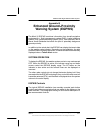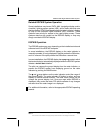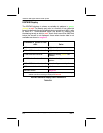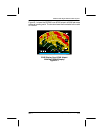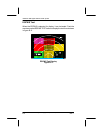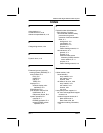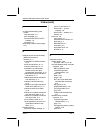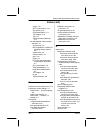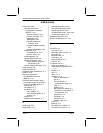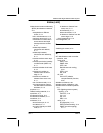
PRIMUS
r
880 Digital Weather Radar System
A28--1146--102--01
REV 1
Index
Index--2
Index (cont)
I
In--flight troubleshooting, fault
access
fault data fields, 7-3
pilot messages, 7-5
test mode with TEXT FAULTS
enabled, 7-2
text faults, 7-5
Interpreting weather radar images,
5-31
N
National severe storms laboratory
(NSSL) thunderstorm
research, A--11
extrapolation to different climbs,
A-- 14
hail in thunderstorms, A-- 13
maximum storm tops, A--13
modification of criteria when
severe storms and rapid
development are evident, A--13
relationship between turbulence
and altitude, A--11
relationship between turbulence
and reflectivity, A--11
turbulence above storm tops,
A-- 12
turbulence and echo intensity on
NWS radar (WSR--57), A-- 11
turbulence below cloud base,
A-- 12
turbulence in relation to distance
from the storm edge, A-- 12
turbulence in relation to distance
from storm core, A--11
use of airborne radar, A--14
visual appearance of storm and
associated turbulence with
them, A--13
Normal operation
preliminary control settings, 4-1
power--up procedure, 4-1
radar mode -- -- ground
mapping, 4-6
radar mode -- -- weather, 4-4
standby, 4-4
test mode, 4-6
color bands, 4-7
dedicated radar indicator, 4-7
fault code, 4--7
EFIS/MFD/ND, 4-7
noise band, 4-6
target alert block, 4-6
text fault, 4--6
O
Operating controls
hidden modes, 3-26
roll offset, 3-26, 3-27, 3-28
WC--884 Weather radar controller
operation, 3-20
BRT (brightness), 3-20
controller target alert
characteristics, 3-21
gain, 3-25
mode, 3-23
range, 3-23
RCT (rain echo attenuation
compensation technique),
3-21
SLV (slave), 3-23
STAB (stabilization), 3-21
TGT (target alert), 3-20
TILT, 3-22
TRB (turbulence detection),
3-21
Weather radar controller
operation, 3-11
controller target alert
characteristics, 3-17
gain, 3-18
LSS (lightning sensor system)
(option), 3-19
radar, 3-13







